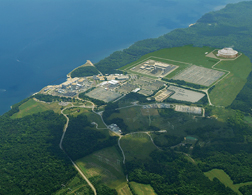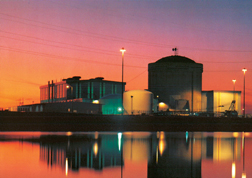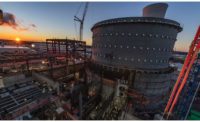 UniStar Nuclear Energy
Calvert Cliffs Nuclear Powerplant could see groundbreaking this year.
|
On Jan. 28, Des Moines-based MidAmerican Nuclear Energy Co. said a new nuclear plant proposed for Payette County, Idaho, was too pricey for its customers right now. “It was clear to us that the cost of building a plant just didn’t fit in with what we would be able to provide to customers of that plant,” MidAmerican spokesman Allan Urlis says.
Increasing costs also has South Carolina Electric and Gas reevaluating plans to file for a combined construction and operating license (COL) for two new 1,100-MW Westinghouse AP1000 reactors at its V.C. Summer plant in Jenkinsville, S.C. The company initially intended to file its COL application in 2007. Robert Yanity, SCE&G spokesman, says the company is taking a closer look at costs and has no definitive target date to file for a COL. To earn a subsidy offered in the Energy Policy Act of 2005, the company must apply by the end of 2008.
 SCANA Corp.
Application will be delayed at SCE&G’s V.C. Summer plant.
|
But others are moving ahead. UniStar Nuclear Energy announced plans to break ground this year on a new Areva U.S. EPR 1,600-MW unit at Constellation Energy’s Calvert Cliffs facility in Lusby, Md.
“A lot of it has to do with the jurisdiction,” says Richard Cortright, an analyst for Standard and Poor’s Ratings Services (like ENR, a unit of the McGraw-Hill Cos.). “Idaho has never had a commercial nuclear plant. Political, public support, for instance, will all play a role” in companies’ decisions, he says.
Marilyn Kray, vice president of special projects for Exelon and president of NuStart Energy, a consortium of nuclear companies seeking two COLs, says rising costs don’t affect NuStart’s pursuit of the COLs, but they could influence a company’s decisions to build. NuStart is pursuing a license for two AP1000 pressurized-water reactors at TVA’s Bellefonte site near Scottsboro, Ala., and for a GE-Hitachi 1,520-MW ESBWR at Entergy Corp.’s Grand Gulf site near Port Gibson, Miss. An Entergy spokesman says the company has not yet decided whether to build a new plant, but it views the COLs themselves as an asset.
Exelon periodically evaluates whether it should build two new ESBWRs at an undetermined location in Texas based on factors that include costs and regional supply and demand of electricity, Kray says.
The Nuclear Energy Institute says the decisions by SCE&G and MidAmerican fall in line with the four to eight new reactors it expects to be online in 2015-2016. “We believe the renaissance of nuclear power in the U.S. will unfold over time, relatively slowly at first, particularly given the inputs to the project development process, not the least of which is limited availability of high-quality construction management expertise,” says NEI spokesman John Keeley.
ancellation of one proposed nuclear powerplant and postponement of another’s permit application has raised concerns that rising “vendor costs” might strangle the sector’s revival in its cradle. But a Maryland-based utility’s plan to break ground on a new reactor this year suggests capital cost is only one of the factors that will influence how the market develops. Cancellations in the power business aren’t unusual, especially as construction costs are rising, says Keeley. Of the 28,500 MW of new coal-fired capacity announced in the last two years, 22,300 MW was canceled, he says.



Post a comment to this article
Report Abusive Comment